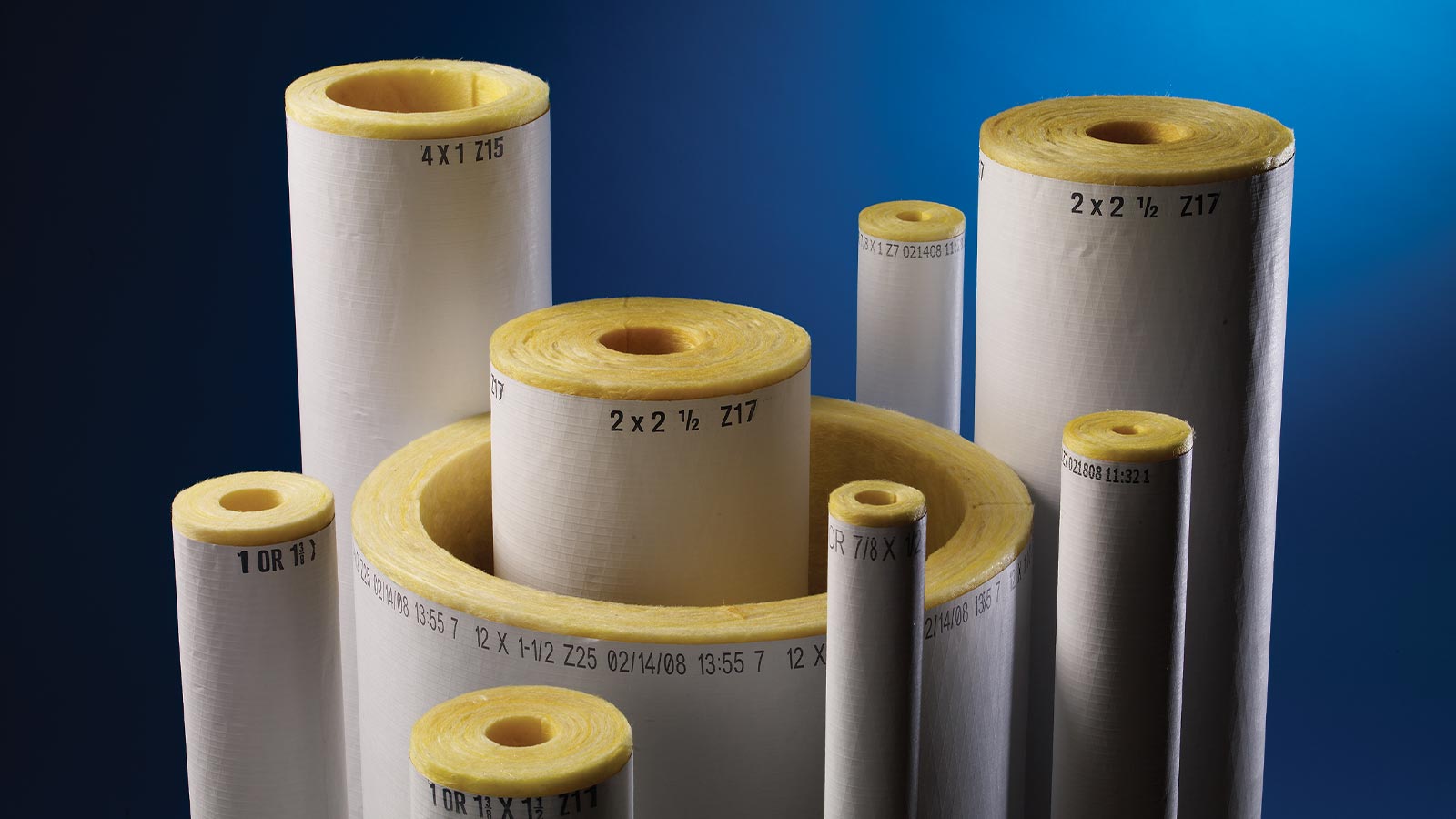As a pipe insulation system designer or installer, you need to ensure you have all the resources required to design and install effective pipe insulation systems. This means understanding the products, specifying and installing the appropriate thickness of insulation, and ensuring that you select the right jacketing for your application. This is why we have released the Micro-Lok® HP Guidebook, a free, Insulation Intel® eBook from Johns Manville. This eBook is designed to serve as your one-stop-shop for all the details you need to know about JM’s Micro-Lok HP pipe insulation portfolio.
Product Descriptions: Understating the basic performance differences among the products in the Micro-Lok HP portfolio is critical to ensuring that you specify the appropriate insulation for your application. The Micro-Lok HP Guidebook details the three pipe insulation products in the Micro-Lok HP portfolio: Micro-Lok HP, Micro-Lok HP Ultra, and Micro-Lok HP Plain. While each of these materials is made from the same, consistent, high-quality fiberglass core, there are key differentiators in the insulation jacketing that system designers need to keep in mind. The eBook outlines exactly what those differences are, and what it means for both designers and installers.
Specification Data: Anyone who has used JM products in the past likely knows where to find the product specification data on the JM website or in the SmartBinder App. The Micro-Lok HP Guidebook contains this information as well. Those specification data and product performance attributes are essential to ensure your system is well designed, including the appropriate insulation thickness and jacketing for your specific application.
3 Part Specification: Micro-Lok HP is unique in that it can be used on systems that operate at temperatures from 0°F to 800°F, but only if precautions are taken to specify and install the appropriate insulation thickness and jacketing. In this 3-part specification, we outline how to detail a correct installation on chilled water and dual-cycle pipe systems, fittings, valves, and controls. The specification also discusses other items related to condensation control and/or heat control. The language in this specification can be used to update your own master specifications if you feel that it’s time to update your specifications.
Installation Methods: One of the most important components to any successful insulation system is a successful installation of the system. In the Micro-Lok HP Guidebook, we outline the critical steps for a proper installation, including details on the following topics:
- All Service Jacket (ASJ) and Self Sealing Lap (SSL) jacket adhesion
- Ring Hangers
- Field Applied Metal Jacket
- Pipe Shoes on Roller Supports
- Clevis Hanger
- Molded Fiberglass
Thickness Recommendations: To ensure your system performs as designed, you must verify the appropriate insulation thickness. While this is important for process control and energy savings on hot applications, it is a mission critical component for cold applications. Without the appropriate insulation thickness, condensation can form on the surface of the insulation; neither scenario is one system designers want to encounter. Using the thickness recommendation tables in the Micro-Lok HP Guidebook can be a vital tool to help ensure the insulation on your systems (hot or cold) is thick enough to prevent condensation, promote energy savings, and ensure personnel safety.
Heat Transfer Tables: While you can download your own version of the JM NAIMA 3E Plus® tool directly from the JM website, we have developed heat transfer tables to guide you. You can contact us directly for exact values for the unique needs of your application. The heat transfer tables in the Micro-Lok HP Guidebook cover nominal pipe sizes ranging from ½” to 24” and are offered with and without the metal jacketing.
It’s free to access and download the Micro-Lok HP Guidebook on the JM Website. Get your copy today.

